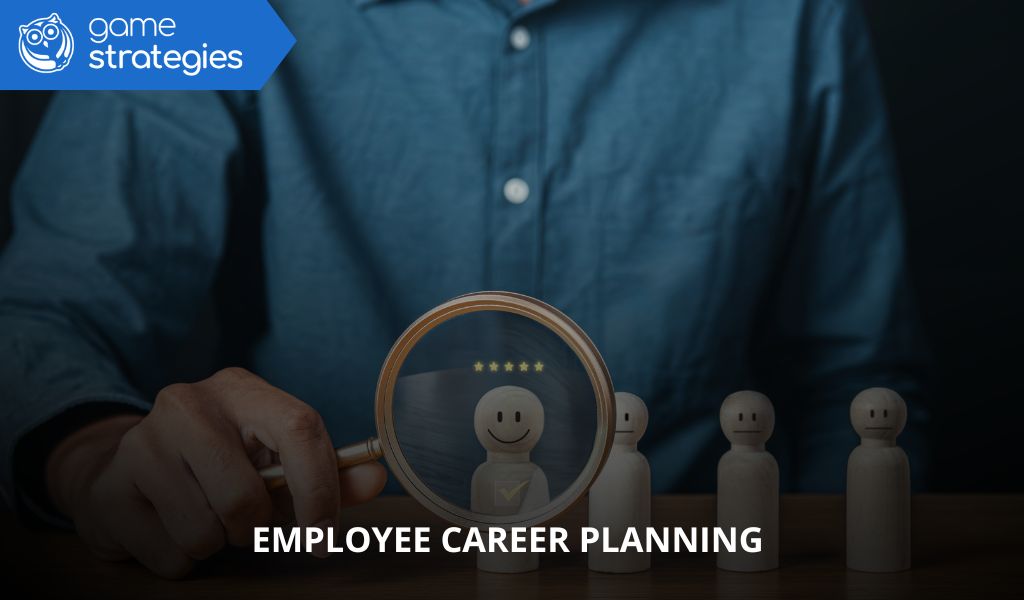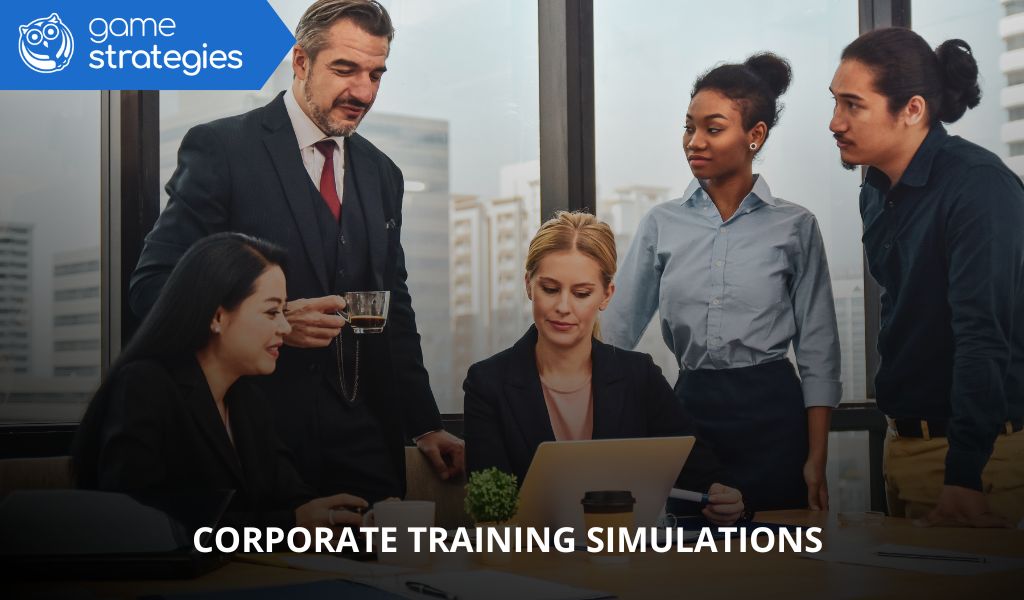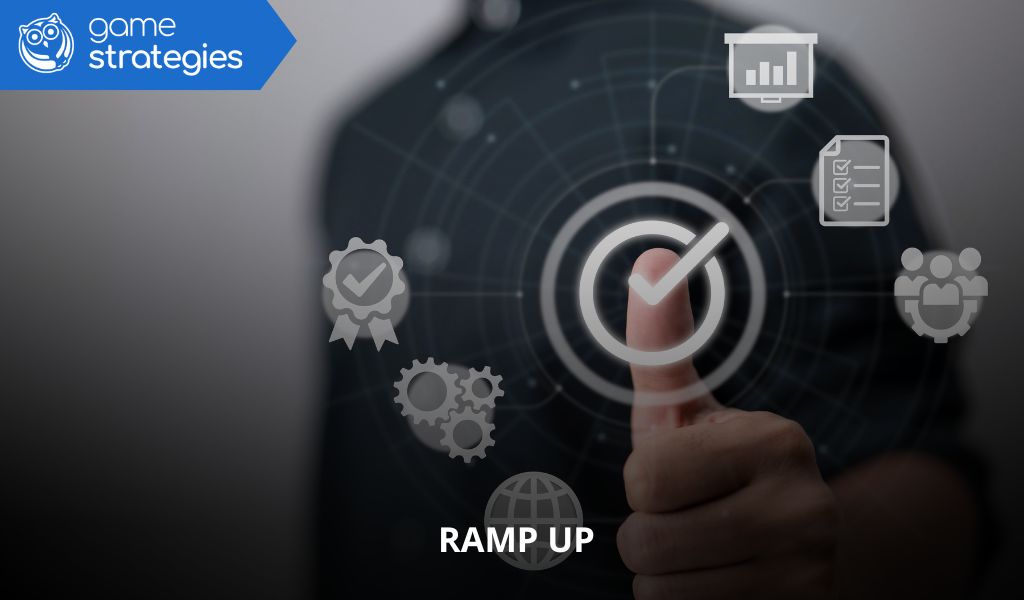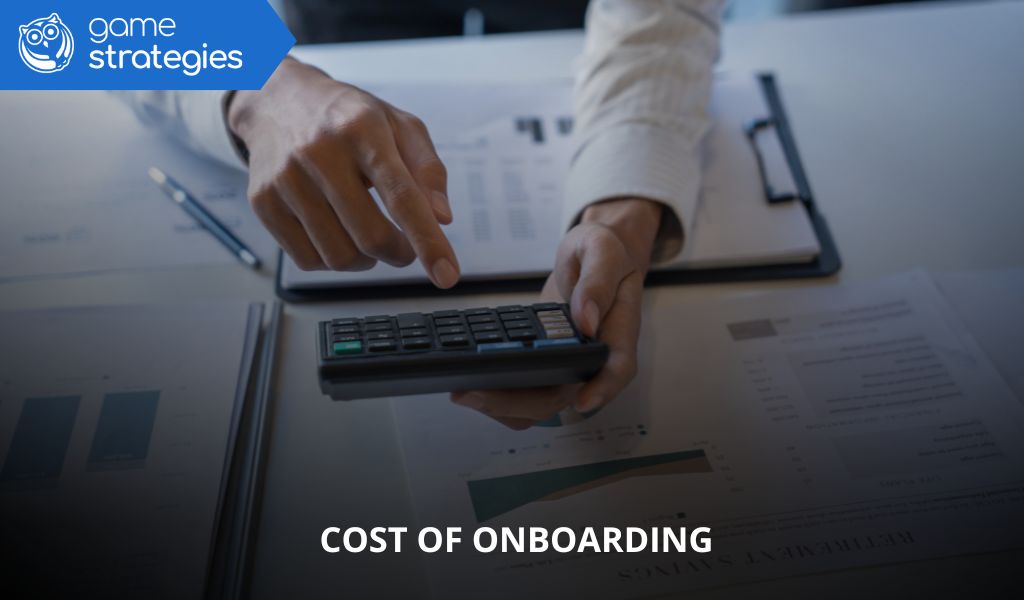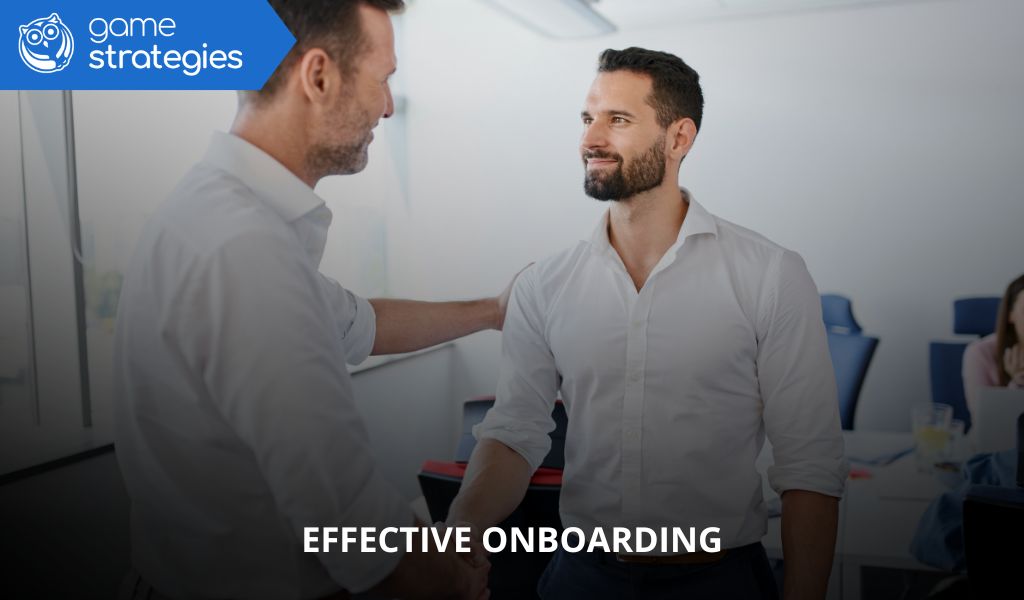In today’s fast-moving world of work, where change cycles keep shortening and roles demand versatility, employee career planning is a strategic lever for retention and performance. Yet many organisations still rely on theoretical development models—mass courses, passive videos or memory-based tests—that barely reflect the realities of the job.
To close the gap between knowing and doing, content alone isn’t enough; you need experiences that transform behaviour and measure outcomes. In this guide you’ll discover:
- Why employee career planning is pivotal to your talent strategy.
- How the learning environment enables (or blocks) on-the-job transfer.
- Actionable steps—grounded in learning psychology—to activate motivation and sustained behavioural change.
- How a specialised platform like Game Strategies implements these principles and measures real impact.
What is a career plan and why it’s key to talent retention in employee career planning
Definition and objectives of a professional career plan
A professional career plan is a structured, living roadmap that aligns an individual’s aspirations and capabilities with organisational needs over time. Its core objectives are to:
- Clarify role expectations and future opportunities.
- Map skills and experiences required for progression.
- Provide development pathways tied to business priorities.
- Support fair, transparent decisions around promotions and mobility.
In short, employee career planning connects purpose, performance and progression.
Benefits for the company and the employee
For the organisation: higher retention, stronger engagement, clearer succession pipelines, better internal mobility and reduced hiring costs.
For the employee: visibility of opportunities, tailored development, meaningful goals and increased employability. The result is a healthier psychological contract built on trust and growth.
The link between professional development and motivation
Motivation thrives when people see progress. Clear career steps, regular feedback and measurable milestones signal that effort translates into advancement—boosting autonomy, mastery and purpose. Effective employee career planning turns learning into momentum.
Steps to design an effective employee career planning programme

1. Identify the role-critical and business-critical competencies
Start with a skills architecture: technical, behavioural and leadership competencies tied to strategy. Define proficiency levels (e.g., foundational, proficient, advanced) and observable behaviours for each role family. This anchors employee career planning in what the business truly values.
2. Assess the employee’s starting point
Use multiple lenses: self-assessment, manager review, 360 feedback, work samples and simulation data. Convert insights into a strengths/opportunities profile. Baselines make progress visible and guide targeted interventions.
3. Set short-, medium- and long-term goals
Translate aspirations into SMART goals aligned with career stages (6–12 months, 12–24 months, 24+ months). Tie goals to measurable outcomes—project scope, quality, speed, stakeholder impact—not just course completions.
4. Define concrete development actions
Blend learning modalities to match goals:
- On-the-job: stretch assignments, shadowing, rotations, mentoring.
- Practice environments: simulators, role-plays, scenario-based challenges.
- Formal learning: micro-courses, certifications, communities of practice.
- Evidence building: portfolios, demos, contributions to internal wikis.
Each action should specify required skill, success criteria, resources and due dates.
5. Support with ongoing check-ins, feedback and iterative adjustments
Institute monthly nudges and quarterly reviews. Use data from projects, simulations and stakeholder feedback to refine goals. Treat the plan as a product: iterate based on evidence. This cadence sustains employee career planning and prevents “set-and-forget” documents.
How gamified learning accelerates employee career planning
Personalising learning by employee profile
Adaptive pathways tailor difficulty, content and pacing to skill levels and preferred modalities. Personalisation keeps challenge in the “Goldilocks zone”—stretching without overwhelming.
Measuring progress with motivating dynamics
Points, badges, levels and progress bars make advancement tangible. Leaderboards and team challenges add social energy—provided they prioritise mastery and collaboration over vanity metrics.
Simulators and scenarios to train real-world skills
Branching scenarios, virtual labs and role-plays let employees practise critical decisions safely. Clear performance indicators (quality, speed, customer impact) shorten time-to-competence and de-risk on-the-job learning.
Continuous feedback and a healthy error culture as engines of improvement
Immediate, actionable feedback—plus psychologically safe rehearsal—turns mistakes into data. Spaced repetition consolidates techniques, while debriefs (“What worked? What would I change?”) build metacognition and resilience.
The value of using platforms like game strategies for employee career planning
What game strategies brings to career planning
- Adaptive, gamified simulators that mirror real role challenges and auto-adjust difficulty.
- Narrative-driven scenarios linking choices to business outcomes and ethics.
- Intelligent feedback engines offering instant, personalised guidance.
- Multisource dashboards that connect platform data with ERP/CRM KPIs to evidence impact.
- Collaborative challenges aligning culture, teamwork and performance habits.
- Behavioural analytics that correlate practice, skill level and business results—proving ROI.
From paper plan to practised progress
A robust employee career planning framework turns development from a promise into a practice. Anchor plans in real competencies, track evidence of behaviour change and sustain momentum with feedback, gamification and safe practice. With the right platform, employees don’t just learn more—they perform better, faster and with purpose.
¿De cuánta utilidad te ha parecido este contenido?
¡Haz clic en una estrella para puntuarlo!
Promedio de puntuación 5 / 5. Recuento de votos: 1
Hasta ahora, ¡no hay votos!. Sé el primero en puntuar este contenido.

